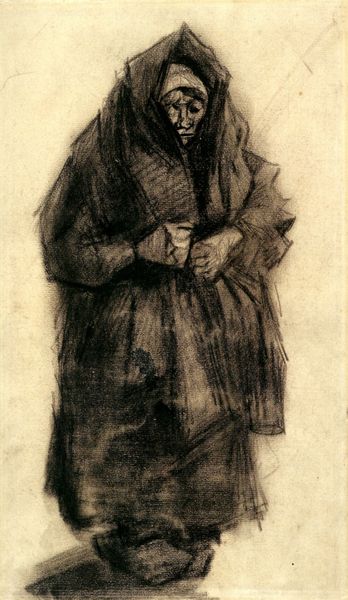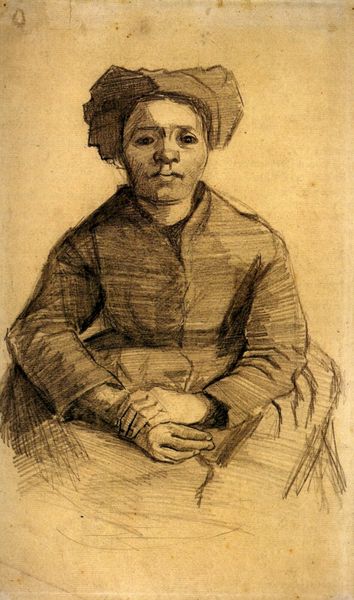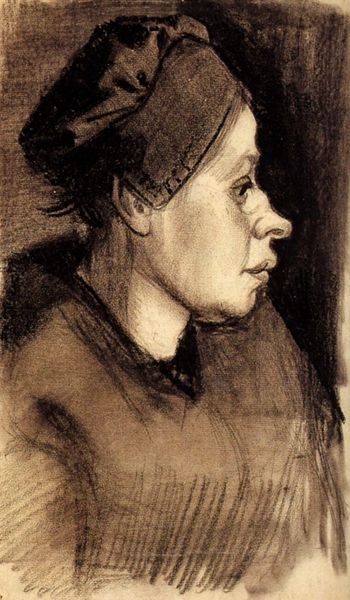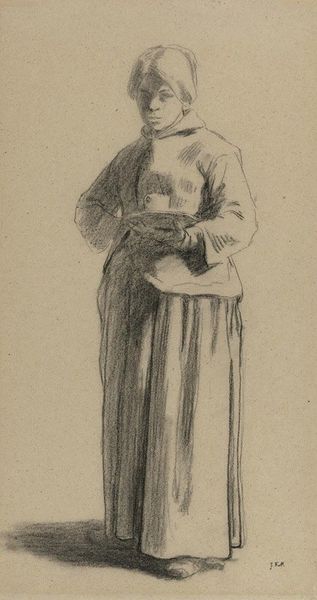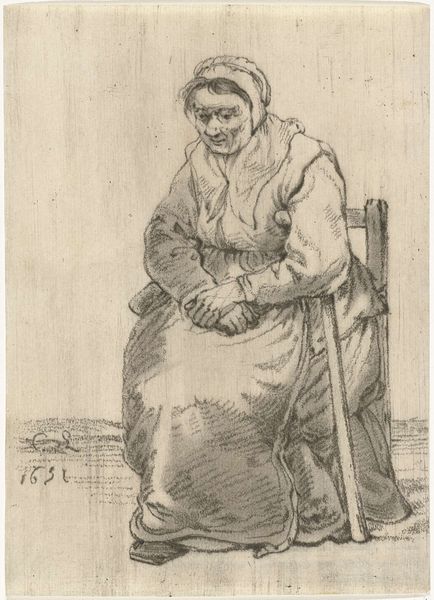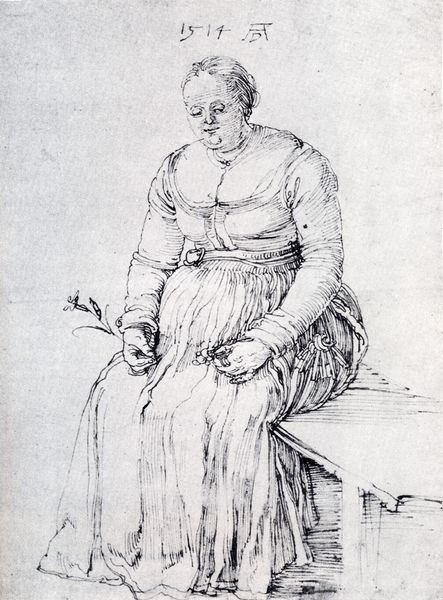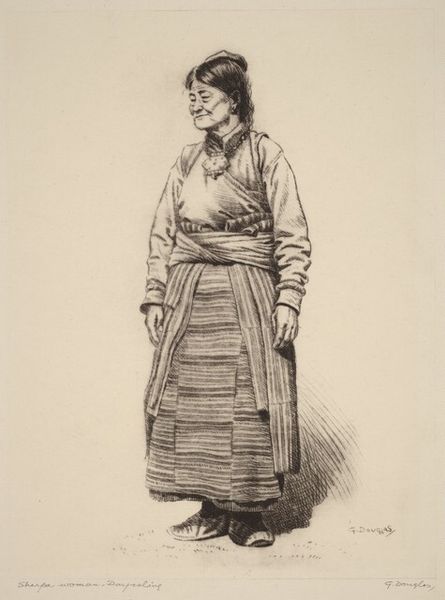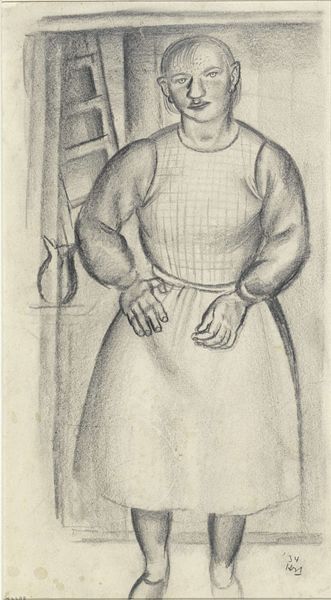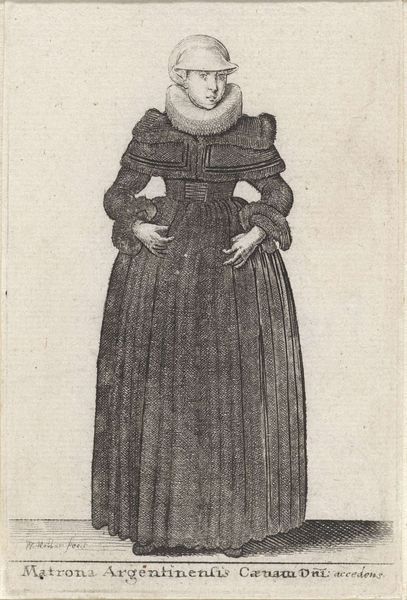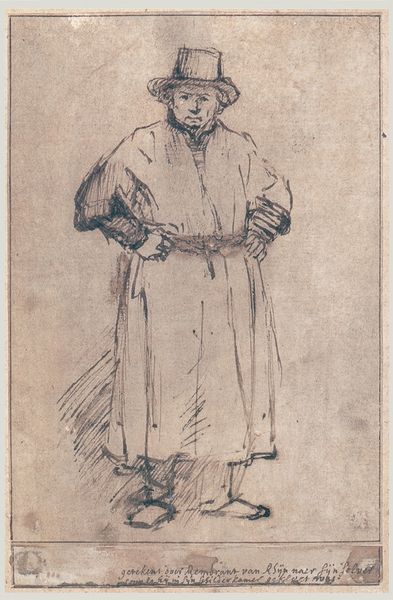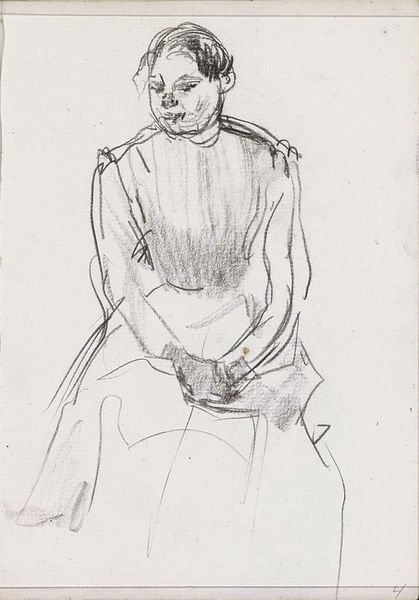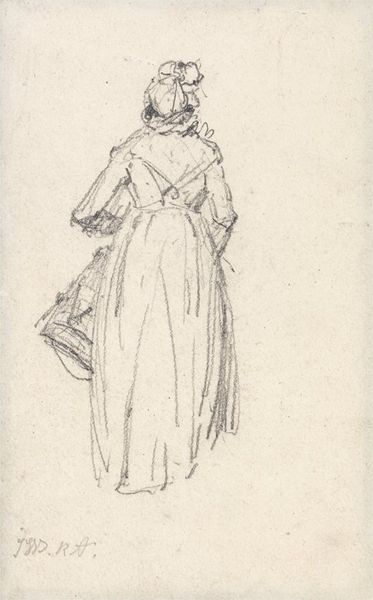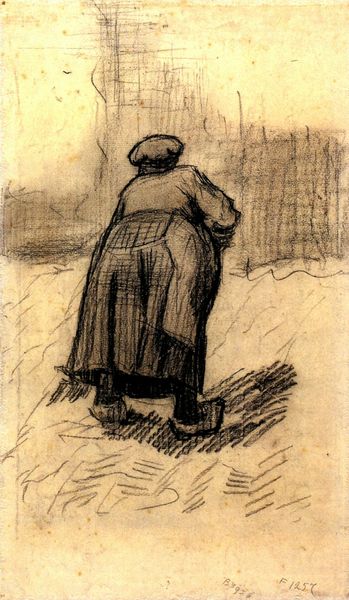
drawing, charcoal
#
portrait
#
drawing
#
charcoal drawing
#
sketch
#
portrait drawing
#
genre-painting
#
charcoal
#
post-impressionism
#
realism
Copyright: Public domain
Curator: Up next we have Vincent van Gogh's charcoal drawing "Woman with Her Left Arm Raised", from 1885, currently housed here at the Van Gogh Museum. It's a powerful piece, raw and evocative, isn’t it? Editor: Absolutely, there’s a quiet dignity there, but also a real weight, both literally in the woman’s form and figuratively, something worn in her expression. The drawing has that characteristic Van Gogh feel, doesn’t it? Like we’re looking straight into her soul. Curator: Precisely. This work was done during Van Gogh's Nuenen period. He was deeply invested in depicting the lives of peasants. There's a sense of social realism at play; Van Gogh wasn’t romanticizing rural life but presenting it with unflinching honesty. The "Potato Eaters" comes to mind. Editor: Yes! You can definitely see the connection. There’s a certain roughness in the linework – you can see the individual strokes. It gives the work an unfinished quality, almost as if we're catching a glimpse into the artistic process itself. Do we know who this woman was? Curator: We don't have her name, sadly. What strikes me is the pose. That left arm raised almost feels defensive, or perhaps resigned. There is something very powerful in the simple everyday, isn't there? Editor: Exactly! He makes her monumental, a testament to the strength and resilience often overlooked in everyday women. The medium too—charcoal on paper—contributes to that raw immediacy. I’m also struck by the tonal range he achieves. There is so much depth. Curator: It’s fascinating how Van Gogh uses light and shadow to give her form substance, grounding her in this harsh world. His technique isn't refined in the traditional sense, yet it serves a greater emotional purpose. The sketch, while incomplete, is so expressive. Editor: Right, because it’s not really about a perfectly rendered likeness, is it? It’s about something much more profound, a certain emotional truth. This work stands testament to Van Gogh's ability to see the beauty and dignity in overlooked people. Curator: Looking at it this way does bring into sharp focus how artists contribute to the visual representation, the narrative construction of social class. Editor: In the end, it's a study of humanity as a whole, the grit and quiet perseverance of a life lived close to the earth. Beautiful.
Comments
No comments
Be the first to comment and join the conversation on the ultimate creative platform.
